[juicebox gallery_id=”66″]
The Wise Man, David Wise
The sound of pool balls striking each other is unique and recognizable. But the rhythm is off. Five smacks, then silence, then eight and a laugh. This is no pool shark, it is a young child whose voice echoes down to us from the second floor. David Wise sits across from me in the rarely used, ground floor living-room furniture set of a hotel at Copper Mountain, where the US Freeskiing team is training. He recognizes the laugh, leans back and shares a special whistle. Dad stuff. “I’m here and I hear you,” the whistle tells his daughter. Eventually, she comes to the top of the stairs to see where the familial whistle came from. But her father is talking, about growing up in a ski family in Reno, NV, about skiing, about halfpipe, and that is perhaps the only thing that can distract him from his wife and child.
David Wise has three consecutive gold medals in halfpipe at one of freeskiing’s premier events, X Games Aspen. Those medals make him a favorite to take home Olympic gold in Sochi when halfpipe skiing is included for the first time. Over the next hour, the father answers my questions as a veteran of media junkets. He loses himself in the moments of his ski memories and in contemplating what skiing a halfpipe means to him. Much like the rest of us, he loves skiing and would love to do well at the Olympics, but his goal is beyond those final scores.
The Wild Man, Torin Yater-Wallace
In both of its meanings, the background is similar. Torin Yater-Wallace also grew up just outside a ski town, Aspen, CO in his case. The soundtrack of our interview is also familiar. But it’s the sounds of Torin’s friends echoing around the Woodward at Copper barn—cheers when someone does a dub on the tramps or the rhythmic romp of skateboard wheels pumping through transitions. A collapsed lung sidelined Torin in the middle of the US Freeskiing team’s prequalification training, and I can tell he’s simply happy to be out of the hospital, out of his hotel room and talking about skiing, even if it is for another interview.
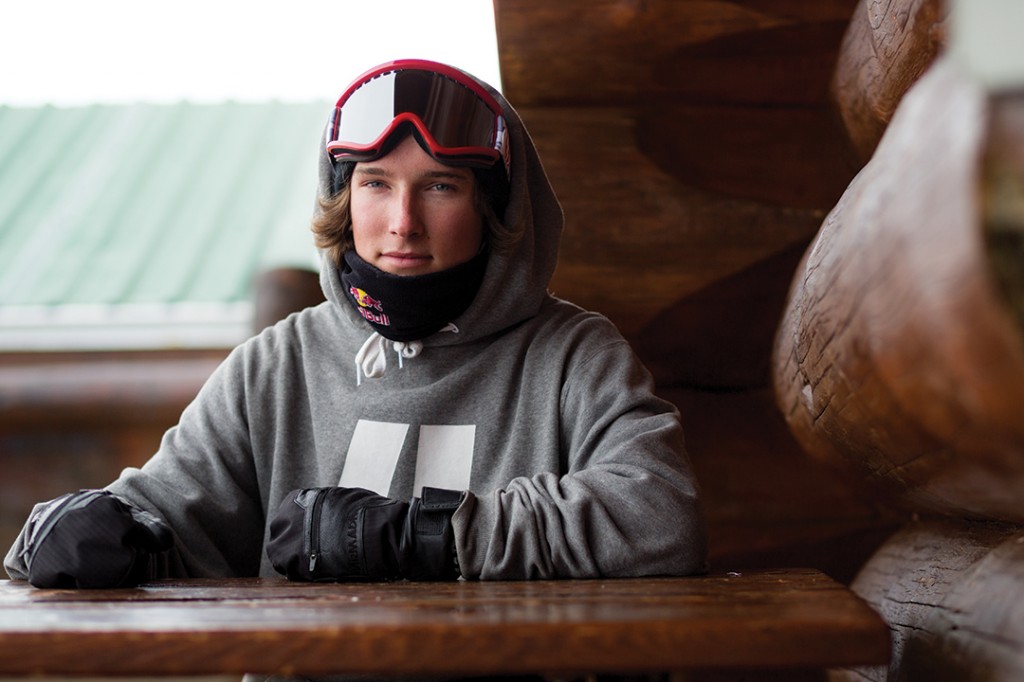
Torin Yater-Wallace. Portrait by Erik Seo.
Torin Yater-Wallace has two consecutive gold medals in halfpipe at freeskiing’s other premier event, X Games Tignes. Those medals make him a favorite to take home Olympic gold in Sochi. As we speak, I almost feel bad about using my position at Freeskier to make him feel comfortable. Crossing the brand-message line of sponsors and sport organizers is part and parcel of Torin’s persona. But he speaks the truth and, at 18, this man, and yes, he strikes me as a grown man, is sure enough in himself to say that he is a skier above all and to live with the complicated repercussions of his answers. Much like the rest of us, he loves skiing and would love to do well, but his goal is beyond those final scores.
David…
Does skiing halfpipe scare you?
DW: There certainly are scary aspects because you’re landing on a razorblade’s edge. One foot in either direction can be really bad. The fastest place to land is right at the top of the pipe, but six inches from there is [completely] flat. It doesn’t scare me, but I’ve been doing it for 12 years now. I’ve kind of overcome all those things that used to scare me. I’ve developed a way of skiing pipe where I’m super calculated. I fall as little as possible. I still blast myself from time to time, but I’ve done all these tricks I’m doing so many times, and every new trick that I do is really just a variation on tricks that I learned a long time ago. It’s not nearly as scary as it used to be, and that’s kind of part of my journey as a person. I like looking at things that scare me and overcoming them.
Skiing halfpipe has a dichotomy in that ski technique is a big part of the judging, but as soon as you leave the lip, you have this freedom of style. Can you explain where those two things mesh for you?
DW: One of the things that draws me to halfpipe is that it’s so in your face, it’s so intense. It’s one landing to one takeoff in almost the same motion. When you see a really good halfpipe rider, they land on edge and never bother to change edges, and that’s what makes you go really big. At the same time, you have this apex. When you’re skiing big lines or hitting jumps, you’re always moving forward, no matter how much air you catch. In the halfpipe, you have this moment of true weightlessness that I haven’t experienced in anything else I’ve ever done. That is the time, when I set the rotation perfectly, I can tweak the grab into next week. It just feels so good. Going big is mandatory and being smooth is mandatory, but if I was to take off dragging a hand and hold the grab the whole way, people would think it was cool. That’s the freedom of what freeskiing is.
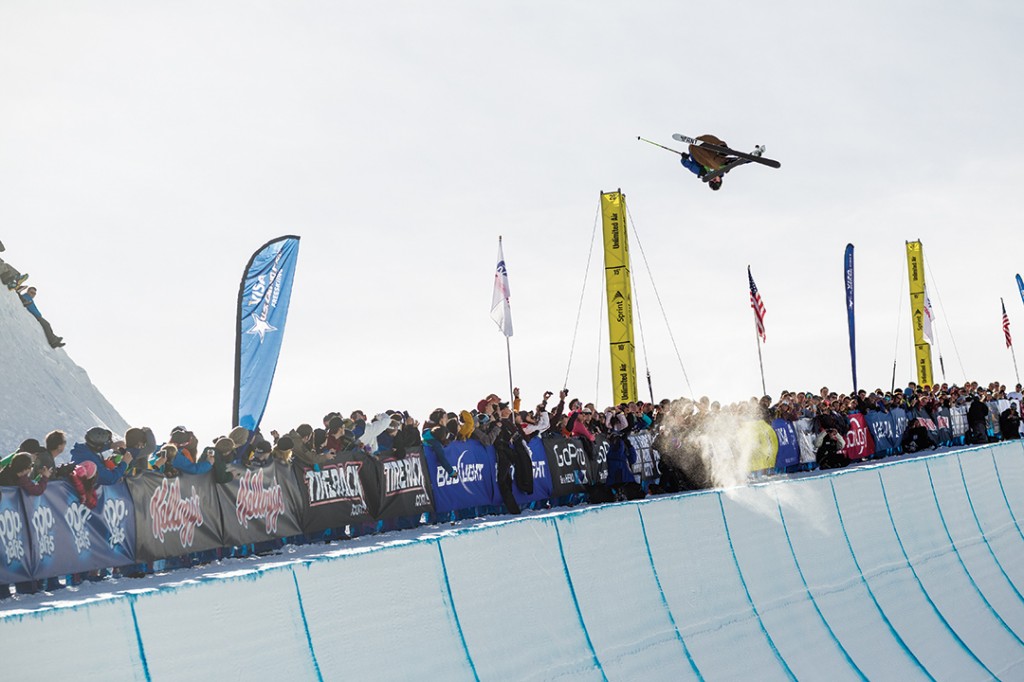
Wise competes in Park City, UT. Photo by Erik Seo.
Is there something about your upbringing that made it feel natural for you to make that big leap to get married at 20 and have a kid?
DW: I always thought I was going to get married late. I realize now, being a father, that growing up I was always watching my dad and thinking what things I would do to be a good dad and what things I respected about him. So without knowing it, I was always setting myself up for being a husband and father. The plan in my life—it was always that I’m going to ski as hard as I can until I’m old and broken, and then I’ll get married. It never even crossed my mind. But then I found the right girl, and it changed my whole perspective. I found somebody who added more to my life than I thought anybody else ever could, so I was like, what’s the point of waiting?
Even at a young age, do you think the steadying influence of having a family is an advantage to you?
DW: It’s definitely become an advantage. Just because I did it a little younger doesn’t make it any more crazy or different. The fact is [my wife] is part of my team. You have contracts, you have sponsors, you have relationships that come and go in the ski industry. But someone you’re married to, you’re family. That’s a contract that never needs to be renewed. She’s on my team, and I’m on her team. For one thing, she teaches me perspective. I realize that skiing is awesome—I love doing it—but it’s not the end all. There’s a lot more going on in the world than just making a few turns, a couple flips and spins in the halfpipe. Win, lose or fall, I still have my family there supporting me and loving me. If I’m a good husband and father, then everything beyond that is just a bonus.
Tell me about your family growing up.
DW: I grew up in a skiing family for sure. My dad ski raced in college. My mom was a skier. My sisters were three and a half years older than me and already shredding around. My whole life I was just chasing them. When I was young, I was ski racing, and so were they. They were always just enough older than me to be a little bit faster. I think it was a good thing because they pushed me to another level. Instead of competing with guys in my own age group, I was just competing with my sisters who were so much better than me.
So how did the transition from racing to freeskiing happen?
DW: It was in the blood for me. I liked to jump off stuff; I liked to fly through the air. I wasn’t really scared of pain. I wasn’t scared of injury. I was just pushing the limits always. I think it was something that my dad knew was coming all along. And he just wanted to get me so that my skills were good enough in skiing before I made the switch and moved on to freestyle. That was when freeskiing was getting popular. Candide [Thovex] and CR [Johnson] and Tanner [Hall] were all really pushing the limits, and I was already a good skier, so I took what I already knew and started jumping.
CR also grew up in Tahoe, like you, and was a role model to so many skiers around the world. How did he influence you?
DW: It was honestly CR and Candide, that year that they just decided to go 10 feet higher than everybody else. All of a sudden, this wall that everybody had been hitting was smashed. You could go as high as you wanted and that was something unreal for me to see. That appealed to me, this no-limits part of the sport. CR was the first pro I ever met in the flesh. Growing up in Tahoe, he was such a big role model. He would ski up to you, and he was such a humble guy. I actually got to know CR more after his brain injury. He spent a lot of time after his injury with my coach, Clay Beck, and on the trampolines and stuff. It was this crazy experience for me. I think for him, it was a little intimidating because I was doing double flips, and he was trying to learn how to do backflips and 360s again. It was cool to see his perseverance through all that. He wasn’t so prideful that he couldn’t come out and humble himself and do 360s on the trampoline with me, some young, up-and-comer kid. He’s become more and more of a hero to me just through every experience I’ve had being around him, being close to him, knowing his family and his legacy.
Torin…
Does skiing pipe scare you?
TYW: It’s scary as hell anytime before March, when it’s icy, and then after that it isn’t.
How do you go from saying pipe is scary to zoning in so you can go as big as you do?
TYW: I make the leap by listening to music and not thinking about it. You put the music on and you’re pumped up about the song you’re listening to and you’re not scared and you’re pumping [the transition] hard with a fast-beat song.
Do you enjoy the technique involved in skiing pipe or is the style more important?
TYW: I enjoy the technique because once you’ve got pipe skiing down and transition skiing and pumping right, then the parts in the air are easy. A lot of it has to do with between the walls, you know? You gotta grow up and learn to ski, be in the front of your boots and have edge control. I like the style a lot. I think it’s kind of hard to have style in pipe compared to in slope because there’s so much going on. I’m thinking about just trying to stay alive. It’s so quick and hectic.
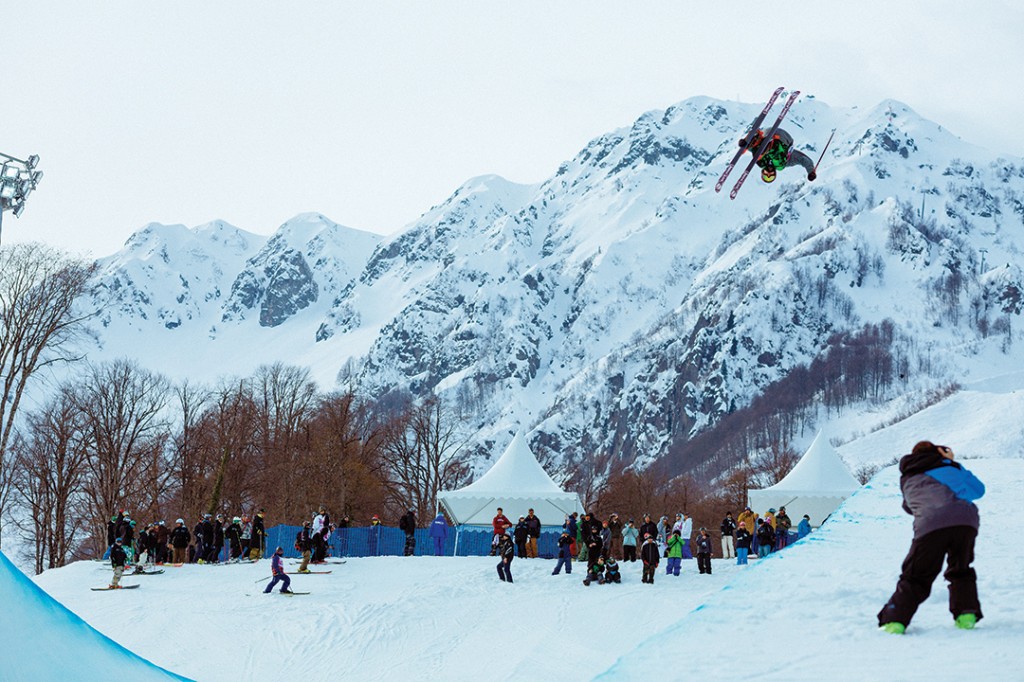
Torin competes at the Olympic Test Event in Sochi, February, 2013. Photo by Nate Abbott
It definitely takes a lot of focus and practice. Do you think it’s a disadvantage that you do so much skiing away from the pipe?
TYW: I think all my skiing outside the pipe just helps with everything—learning just skiing and learning new tricks on jumps and then I can bring that over into the pipe. I’d much rather learn a trick on a jump and then progress to the pipe ’cause if you’re on a jump and you mess up your pop, you can still make it to the landing and wash out or something. But if you mess up the slightest bit of your takeoff in the pipe, you can be completely screwed. I don’t think it’s a disadvantage at all. I think I have more fun, and it just kind of adds to the style factor and bringing a bit of everything into the pipe. It’s pretty boring to just be doing one thing.
What was it like growing up in Aspen?
TYW: It was a crazy place to grow up, but I think it was the best place I could’ve grown up. I definitely wasn’t one of the richest kids; I was getting scholarships. It’s a safe little community, and there’s tons of skiing going on. The whole community is so involved around skiing, with four super, super good mountains, a ski club and X Games. Watching that live every year definitely gave me inspiration to be competing where I’m at today. I got to just skip school to watch X Games finals. I’m sure not every kid gets to do that. It was a daytime pipe finals. They had bleachers at the bottom of the pipe to watch. I think it was the year of Candide [Thovex] and CR [Johnson] going insanely big. I think growing up there set me up for success; it surrounded me with all the things I needed to start a freeskiing career.
Who did you look up to back then?
TYW: I was pretty young when freeskiing was really booming. I was really looking up to the sport in general. I wasn’t pointing out anybody. I would watch movies and see certain tricks and be inspired by the tricks people were doing, then go out and try those tricks. Peter Olenick, I definitely had some influence from him because he was the hometown hero, and I got to see him skiing at my mountains. I was kind of watching everybody though—Tanner [Hall], Simon [Dumont], Vincent Dorion.
When did you first get a coach?
TYW: My first coach was Jamie Lawson, when I was seven. I joined the mogul team at Aspen Valley Ski Club. I think I learned my first 540 that year, ’cause he told me, “Go do it right now. We’re all doing something new today, and you’d better try this.” I went and sent it. It was on Buttermilk and I remember that day. I remember so many things he taught me, just that one year. I was so drawn to learning tricks and it was so fun. Nothing was more fun at the time, just getting on the mountain and learning a new trick. I remember doing my first event with them, but competing, that was never the first thing in my head. I just wanted to do tricks. Tricks were cool.
What do the Olympics mean to you?
TYW: Quite frankly, I don’t even know what the Olympics mean to me. It’s like, so much hype around this year and all this stuff. It’s just crazy. It’s so hectic and so much is going on. To me, it’s almost that I can’t wait ’til it’s done. It’s going to be dope, it’s going to be cool, probably, and a whole new experience. At the same time, I can’t wait to just do my thing. There’s a time when competing is taking over your whole life, and it screws with your head and it’s nice to get a break.
What would winning mean to you?
TYW: It would mean a lot to me to win, not even on the fact that it’s the Olympics or beating the other people or stuff like that. It’s the fact of dealing with that kind of mental pressure. These days, of course, there are a few outlier tricks and runs, but for the most part, all of these pro skiers are at the same level of pipe skiing. The mental game is the biggest part of it. That stuff can screw with your head. With all the build up, it would mean a lot to know that I have the skill and the mental skill for competition. People see it, especially if you’re watching an event or anything to do with sports, and somebody you care about or are really hoping to win is in a tough situation, you can feel it in your nerves watching the TV. But when you’re that person competing, it’s an unexplainable feeling how nerves come into play at moments like that. It’s something I never would have expected when I was younger to come into freeskiing.
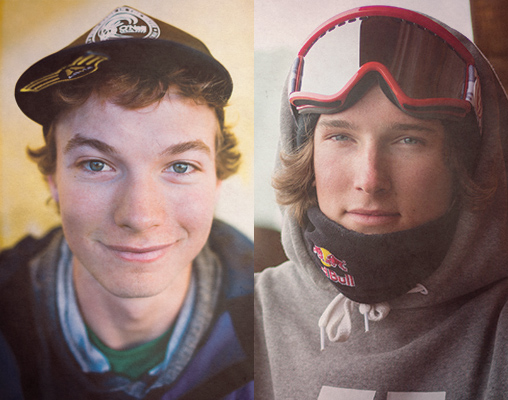
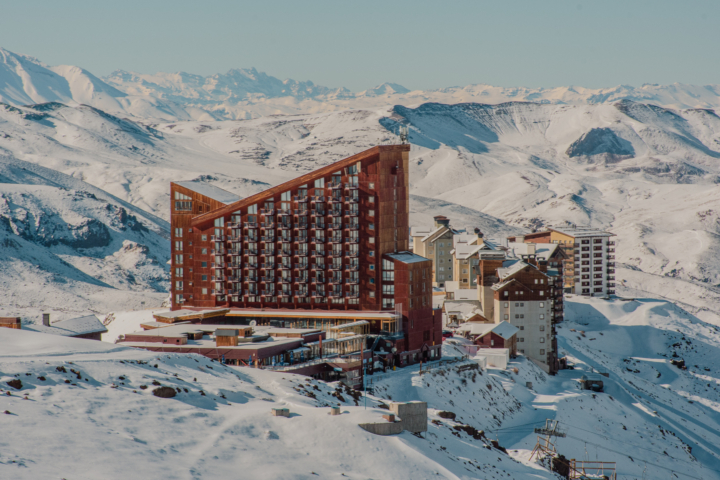


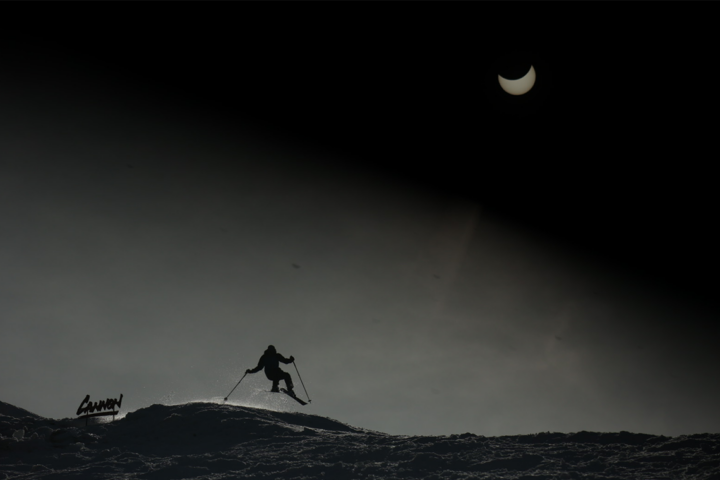


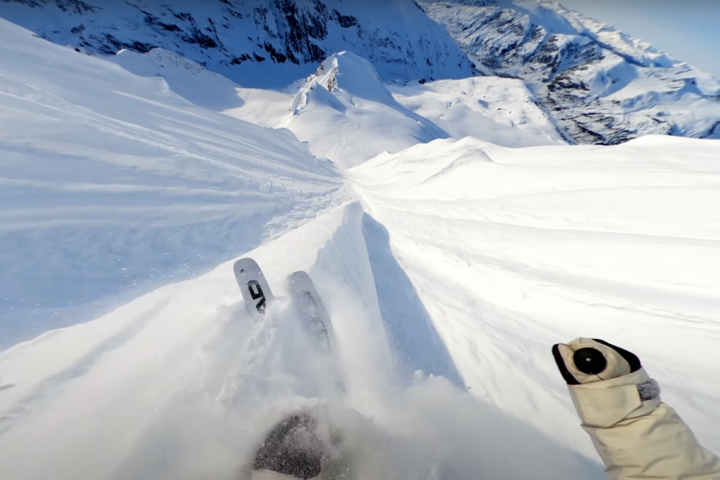

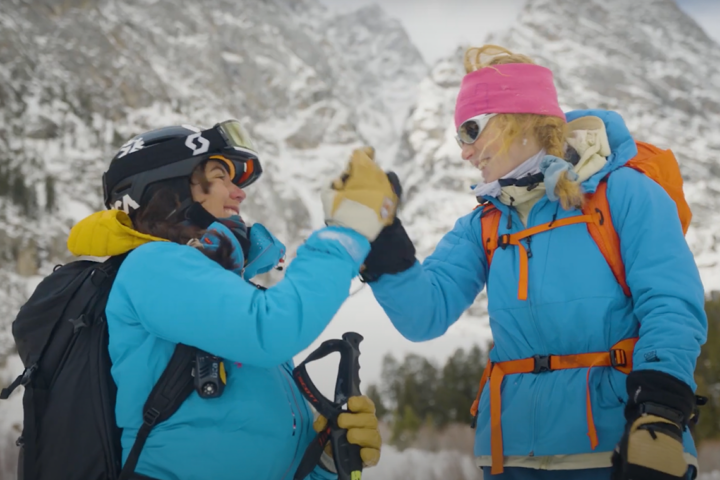
Comments are closed.